Macfilos is back after a much-needed two-week break and I am looking forward to the rest of this new year with the sort of optimism I haven’t felt for several years. First, though, I hope all regular readers had an equally enjoyable time over the Christmas and New Year period and I wish you all the very best for 2020.
And a big thanks to all readers who posted good wishes before Christmas. I hope you haven’t missed the daily ramblings of Macfilos too much.
A break and a treat
A complete two-week break from writing the daily column is something I haven’t felt able to take since 2009 when I first started the blog. Sometimes it can be a bit of a grind, thinking up new topics for every day of the week. Fortunately, we are blessed with a first-rate team of contributors who fill at least one, and sometimes two, slots every week.
Tomorrow, for instance, we have a treat for you — the continuing story of Jean Perenet’s adventures in Cambodia accompanied by a gallery of his wonderful photographs.
Possibly thanks to not having to produce the daily story, the past two weeks have been very relaxing and a complete change from my usual routine. I spent a few pleasant days with friends in the village of Lyminge, near the Kent coast, and managed to fit in a day trip to Rye, one of the prettiest coastal towns in Kent, if not in the whole of Britain.
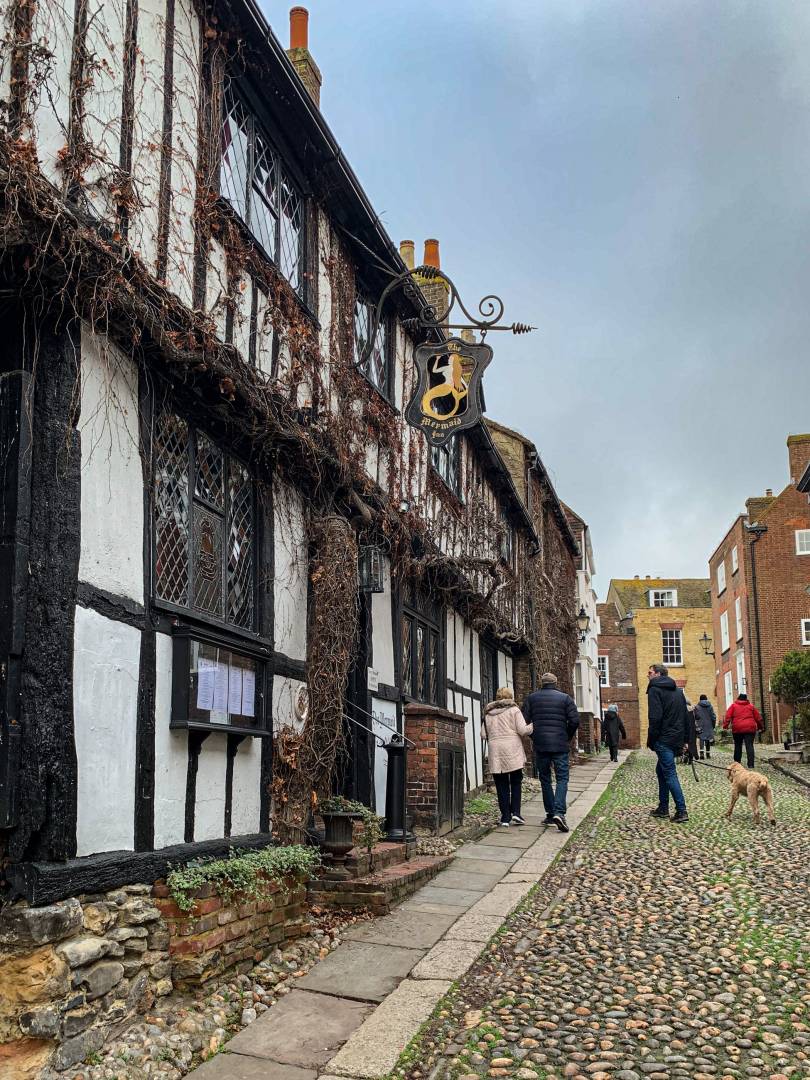
A pocketful of Rye
I haven’t been there for over 20 years. Rye has changed. The banks seem to have disappeared from the high street, along with many of the shops that serve a community. Instead, the cafe count has definitely risen and there are more establishments aimed at the tourist rather than the inhabitant.
But the core of Rye, as an unspoilt medieval port, is unchanged. It is one of the Cinque Ports, the historic confederation of coastal towns in Kent, Sussex and Essex. Dating back to Anglo-Saxon times before 1066 CE, the five original ports were Hastings (scene of William’s victory over Harold), New Romney, Hythe, Dover and Sandwich. The sandwich, of course, thanks to the Earl of that name, is now internationally more famous than a hamburger.
Rye was originally a subsidiary of New Romney but during the fourteenth and fifteenth centuries when the New Romney harbour gradually silted up, Rye was raised in stature. It is also one of the two Ancient Towns, the other being nearby Winchelsea, whose councils traditionally maintained defence commitments for the kingdom as a whole.
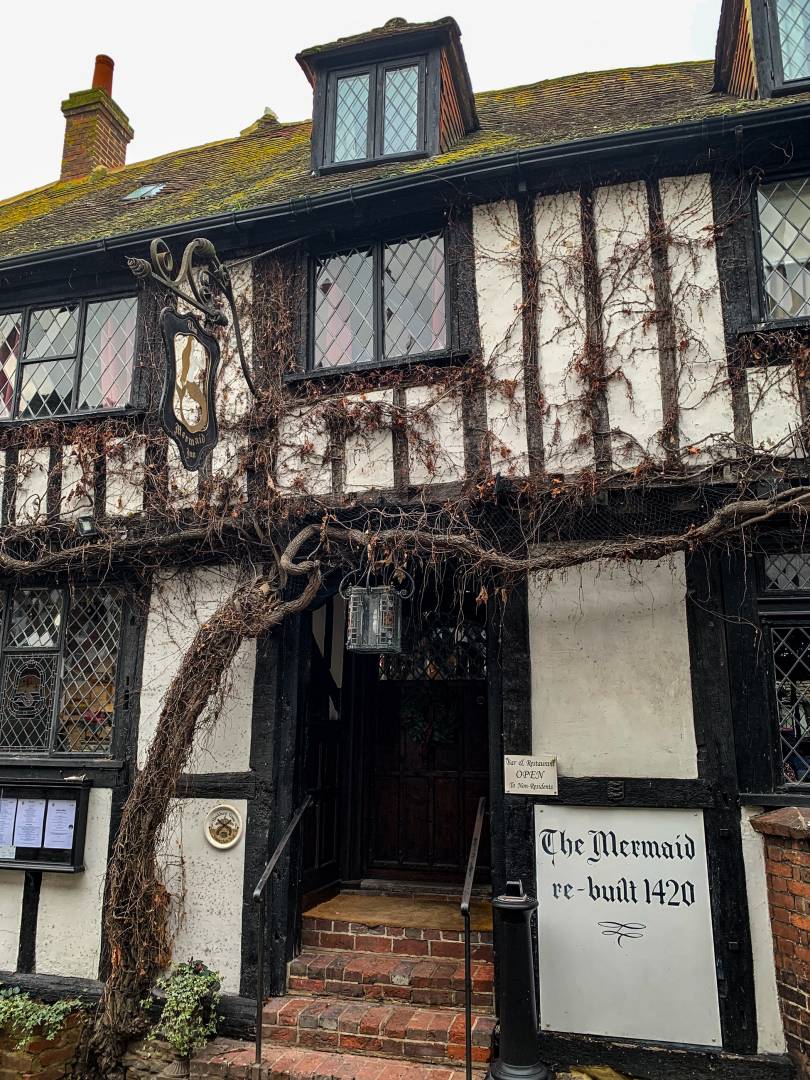
Mermaid’s den
Rye remains a gem and the steep, cobbled Mermaid Street is the core of the town and one that every visitor should see. Halfway up the hill lies the stunning 12th-century Mermaid Inn (“rebuilt 1420″) which is both a magnificent place to stop for a meal or bar snack and a comfortable and very unusual place to stay for a few days.
The Mermaid has had a turbulent history, with many connections to smuggling. During the 1730s and 1740s, it was one of the strongholds of the notorious Hawkhurst Gang. Various of these miscreants are rumoured to haunt the inn to this day. With the existing cellars dating back to 1156, the Mermaid is such a fixture on Mermaid Street that the house opposite is named The House Opposite.
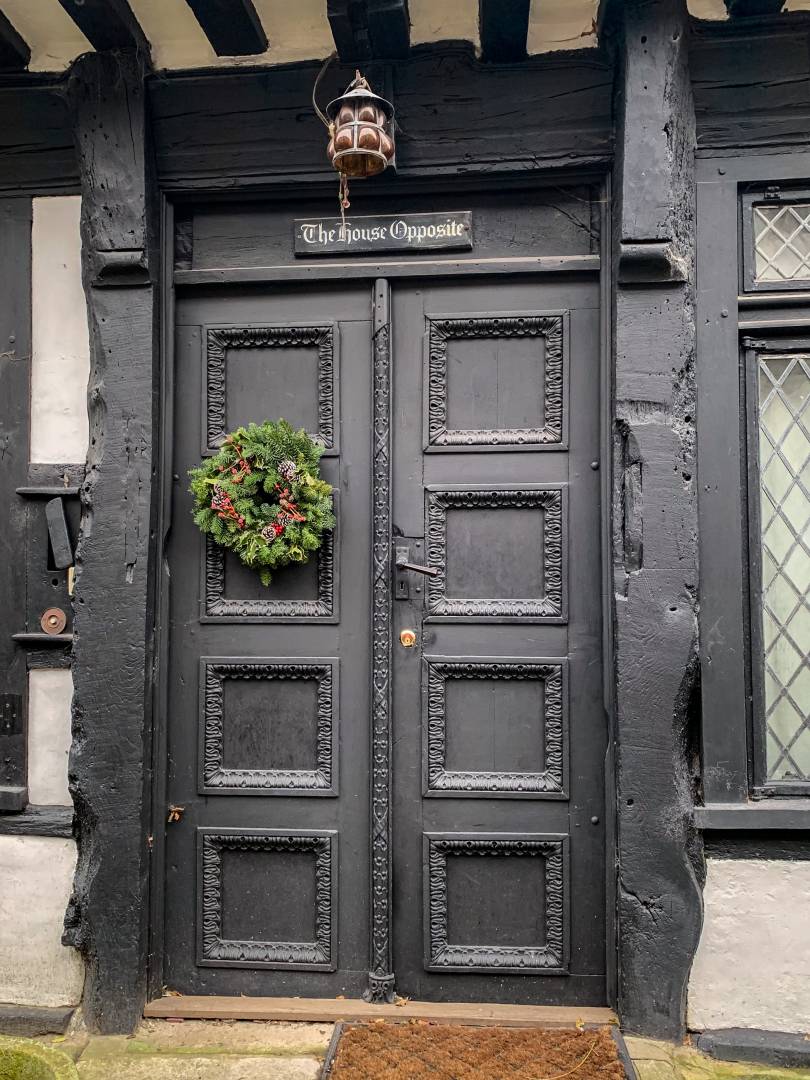
On our visit last week we were welcomed by an enthusiastic and very helpful maitre d’hotel who, from the very moment he opened his mouth, was a London cockney in the oldest and best of traditions.
I’ve never encountered such a broad accent 82 miles from the Bow bells. “You must order the fish finger sandwich,” he advised. “It’s proper naughty.”
Naughty it was, consisting of two fried fish steaks that wouldn’t have disgraced an up-market plate of fish and chips, enclosed in a jaw-breaking crusty roll. Highly recommended if you are down that way. Within minutes, our host was returning with a drink for the next table: “Its a proper ‘andsome gin n’ tonic”, he announced.
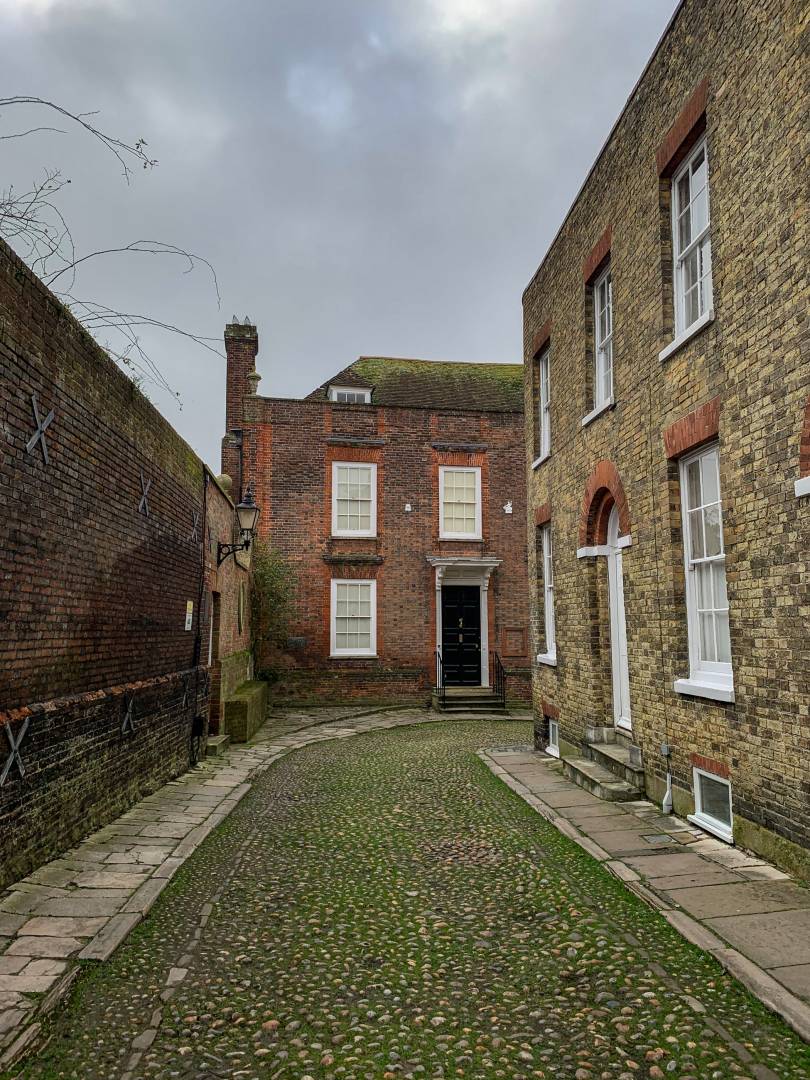
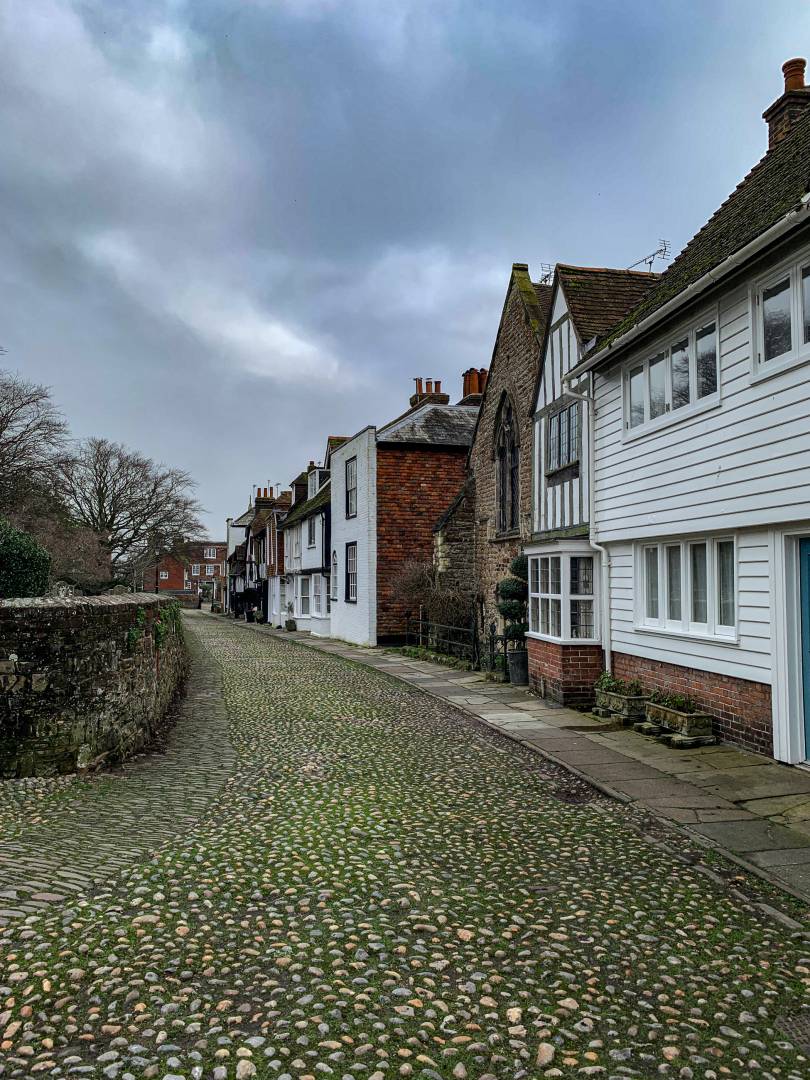
Character count
As I munched the fish sandwich I thought of Charles Dickens. He had an incredible ear for accents, particularly London accents, and The Man from the Mermaid would have been fertile ground for his imagination. It amazes me that even in the 21st century we can find characters such as this — and in the most unlikely of settings where you might otherwise expect to be greeted by an obsequious Uriah Heep of a restaurant manager in his stuffed shirt.

The Mermaid is a little masterpiece and as far away from a Holiday Inn as you could possibly get. And all the better for it. The fish finger sandwich has proper set me up for the new decade and I shall be looking forward to more ‘andsome delights as the months progress. We might even find something rather naughty coming from Leica during this month.
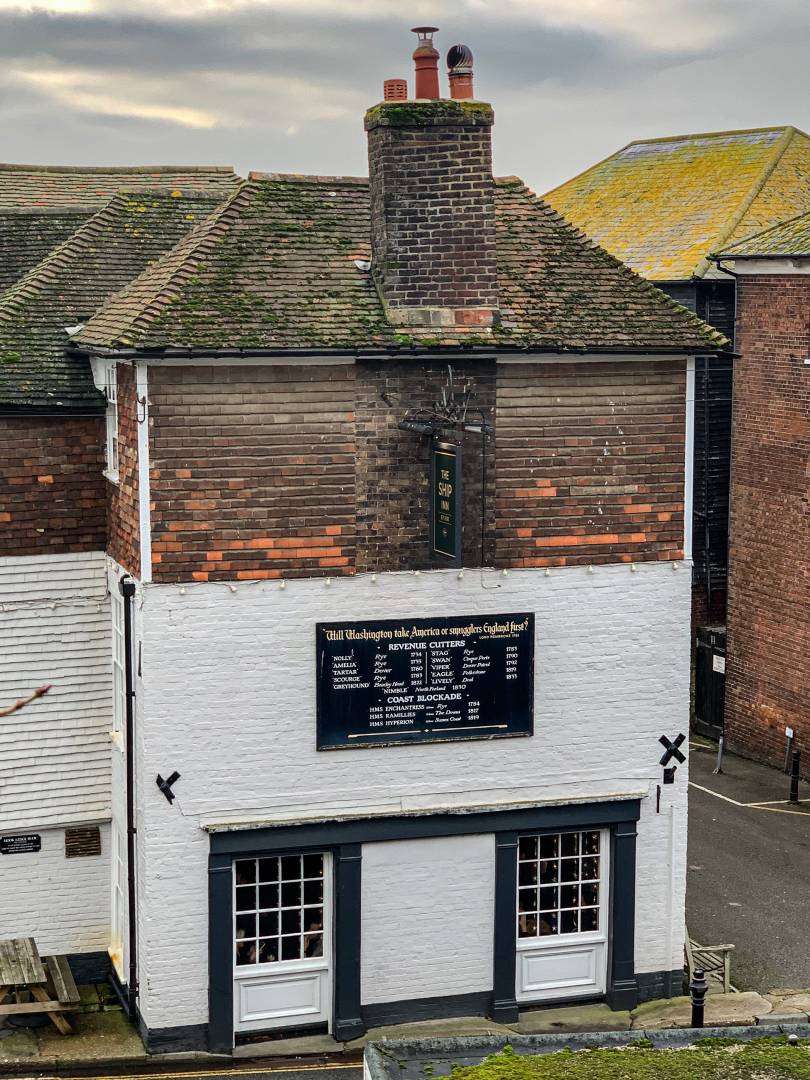
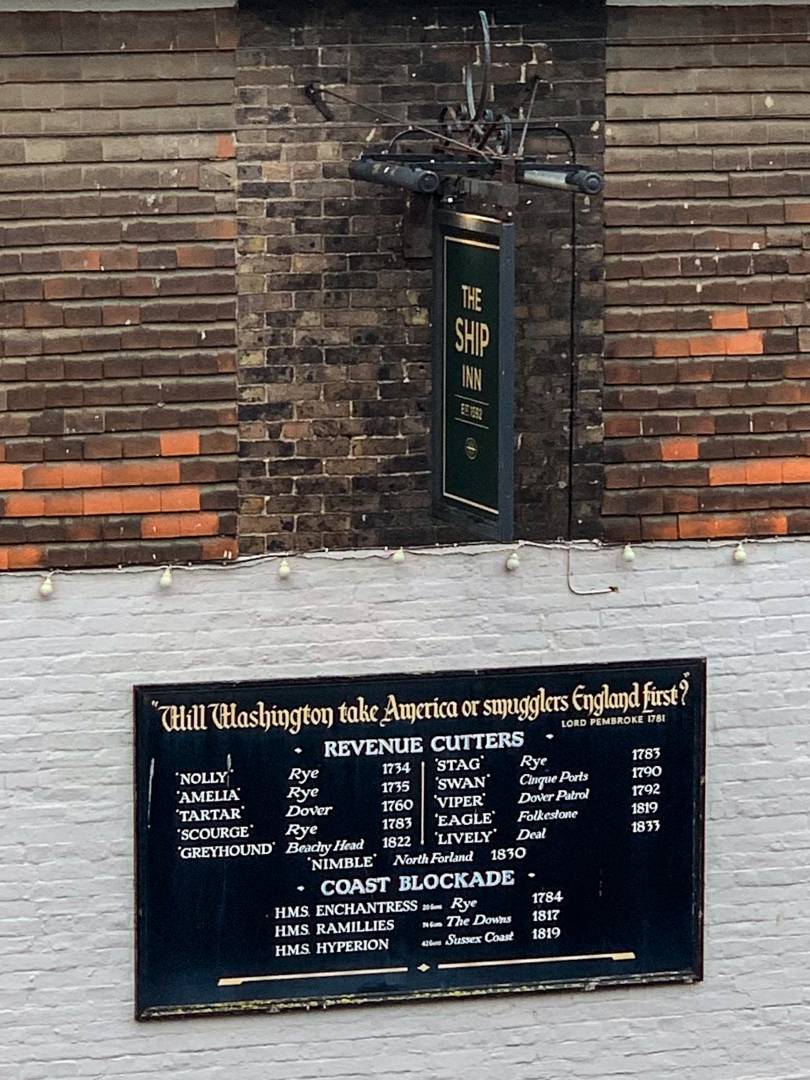
Smartphone revolution
Just in case you are wondering, I spent my afternoon in Rye without a camera. Or, perhaps I should say without a “proper camera”. I had had the M10-D at the ready but forgot to pick up the Billingham on the way to the car. By the time I realised it was too late to turn back, so I used my iPhone XS Max, not even the latest model.
In a way, I suppose, this is a fitting camera to end the decade. The smartphone has revolutionised photography in a way that none of us could have envisaged at this time in 2010. Where will we be in 2030, I wonder.

You made the most of your break, Michael, with a most interesting article and images, bristling with history which I love.
It’s not too late to wish you and all Macfilos readers a very happy and healthy 2020.
You were greatly missed but I hope that it was very refreshing and therapeutic break. You have started the year off with a home run!
Happy New Year, Mike. in the late 1990s, after she had completed a year at the College of Law in Chester, my older daughter my older daughter was offered a job as an apprentice solicitor in Deal in Kent. I recall saying at the time that it would have been easier to for us visit her if she had taken a job across the channel in Brussels. In the event, she came back home to Dublin where she has had a successful career. If she had gone to Kent, I might have ended up visiting Rye and all of the other interesting towns in the area. Your photos are very tempting if I do ever make my way in a car to the ‘other side of London’. Best Wishes for 2020.
William
Thank you, William. The good thing is that Rye is near to the Channel Tunnel so it’s a good place to break the journey if you are ever tempted to drive from Dublin to Wetzlar!
A wonderful article on a part of England with history to spare. Thanks for an inspirational start to the new decade.
Living proof that the camera you have with you is the best camera!
Enjoyable article Mike. I’ve never been to Rye but after looking at your photo’s it could well inspire me to make a trip there.
A great article and pictures to start the new year Mike.
Thanks, Jean. You are next up tomorrow.
The depth of history and character is something I will always miss about England: you practically fall over it at every street corner and lane end. I think I due a trip home…
Your pubs reminded me of a time many years go when I live in Bristol. Two old hostelries had been converted into Berni Inns but still retained their original character and history: the Llandoger Trow and the Hole in the Wall, aptly named to enable would be press-ganged sailors to hide.
Britain is full of rich accents still, despite the steamrollering fo the BBC. For a while when I was a child we lived in a very rural part of the East Riding of Yorkshire. At times the accent was thick and indecipherable. My father recorded two elderly ladies who were approaching 100 years in age, and it sounded like they had just spent the morning talking to Chaucer, or someone even earlier. Many years later living in Amsterdam and attempting to learn Dutch (practice by spitting very hot soup I was told) I was struck by how similar pronunciations were between Dutch and East Riding English. Meet someone early of a freezing cold January morning and you would likely hear something that sounded like “My ek it’s caud!” in Dutch you would hear “Mijn het is koud!”. Accents are fascinating pieces of history caught in amber.
Keep doing what you do Mike – I missed the Macfilos missives over the last two weeks!
If you think the East Riding has thick interesting accents and use of language – try the Teesdale valley – it has its very own dialect that is unique to the area, Liz hates it when she doesn’t understand conversations with some locals in the area, and I translate it without thinking. I spent as much time in the Tees valley as I did in the East Riding, and the Riding is an easier dialect to manage and handle.
But this is what I love about living in the UK, in a single day I can speak with a Yorkshire man (by not looking in the mirror), hear the best Kentish accents, hear the wonderful Scottish tones and a variety of everything in between – and I won’t have left my own office at work.
You are right on the similarities in pronunciation. I am struck, too, by the Nordic and German influence on northern dialects. As a small example, my mother would say she was starving when she didn’t mean hungry. She was cold. If she was hungry she’d say she were clemmed. In the south, on the other hand, starving is always about hunger and not cold. The explanation is simple when you remember that starve comes from the German (Saxon) sterben — to die. You can die of cold or of hunger but the two causes are mixed up between northern and standard English dialects. Don’t get me started!
Nice to have you back, must confess I was beginning to get heavy withdrawals – and not on my bank balance 😂
I haven’t been to Rye for a few years now, but I constantly sail close by when I head over to Dungeness which I love for its barren uniqueness.
So I will settle in again, grateful that you enjoyed the break, and even more satisfied that old faithful Macfilos is back for 2020.
Dave
I have Dungeness in my list of places to visit. Camera meet-up groups travel there frequently, so there must be something in it.
Glad you are no longer feeling deprived.
What a lovely sequence of pictures to begin the year with, Mike! And may it be a creative one, too! I’m amazed what came out of forgetting your Billingham, and I enjoyed the walk down memory lane. My first “visit” to Rye was as a tween reading Malcolm Saville’s novel “the Gay Dolphin Adventure” set in Rye and very evocative of the place, as I later discovered on my real visit in my twenties. Will I get there again? Who knows? But your up-to date account is good to have.
Me too, John. While it is always good to wield a proper camera (of only for the better handling), the mayday smartphones knock spots off the point-and-shoot cameras of yesteryear.
Happy New Year, Mike.
By the way, the coast has changed a bit since that map (above) was drawn “before the storm of 1287” ..Ramsgate is no longer a “limb of Sandwich” but is the major port, with tenders going out daily to the new coastal wind farms, and Sandwich now just a teeny wharf or two, with its river almost all silted up ..and the Isle of Thanet (at the top-right) – on which Margate and Ramsgate stand – now no longer an island, but with just a teeny stream called the Wantsum (really!) trickling where the Isle used to be separate from the mainland.
Further down, between New Romney and Hastings, there’s just a muddy tidal channel up to Rye, and the rest of that expanse of water at Dungeness is now just shingle, low-lying land, and the squat Dungeness nuclear power station ..nowadays also known for Derek Jarman’s shingle garden, and pretty much uninhabited.
The last time we went past I thought we’d call in at Rye, moor up and go up to see the Mermaid, and Reed’s Nautical Almanac (..we were poodling along by boat..) suggested we should berth first at the Harbour Master’s jetty, way downstream at the corner of the coast, just as a matter of courtesy, to tell him of our intentions to float up to Rye on the tide.
I wish we hadn’t: “Oh, you’ll never get up there; oh there’s very little water; there’s nowhere to moor; you won’t make it up there with your draft (depth of the boat: 5′ 3″) ..please continue to the next harbour along the coast”. A real spoilsport. Next time we’ll just go straight in and avoid the rather over-officious ..what does Wiktionary say for ‘Jobsworth’? ..”A minor worker who refuses to be flexible in the application of rules to help a client or customer”. Shame, really, as most south coast Harbour Masters are really keen to welcome intending visitors.
The Queen Mum, of course, used to be Lord Warden of the Cinque Ports (during her lifetime), following Sir Winston Churchill and Sir Robert Menzies ..whom our antipodean pals will recognise as having been Prime Minister down under.
There’s an oddity of tides at Dungeness ..if you take the tide up from Brighton, “upstream” towards Ramsgate at about 7 knots, the rising tide will carry you all the way to Dungeness, where you can then ‘piggy back’ on another rising tide from Dungeness straight to Ramsgate ..but it doesn’t work in the other direction, going south from Ramsgate to Brighton, so you can make it only to Eastbourne on one tide.
But that’s enough about coastal cruising ..wishing you and everyone a Happy New Year – again! – and also wishing you 20/20 health – and vision – throughout 2020!
And a wonderful New Year to you, David. As a confirmed landlubber I’ve never approached Rye from the sea. At first glance you wouldn’t think it is a port but I imagine things were very different back in 1420.
What is beyond doubt that there is enough history in them thar parts to keep you busy for a lifetime. I love the atmosphere.
Welcome Back Carter! Says the TV show.